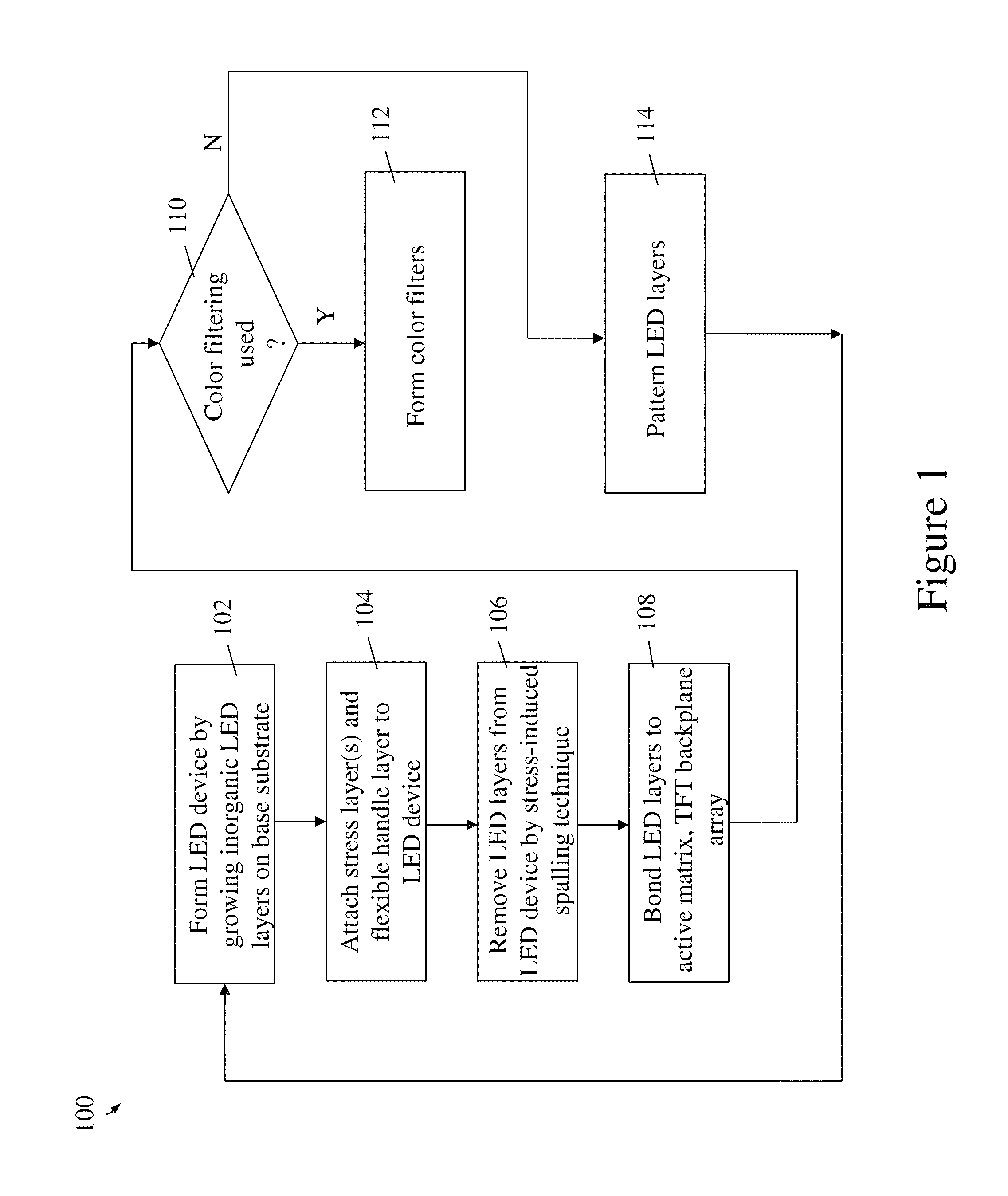Integrating active matrix inorganic light emitting diodes for display devices
a technology of inorganic light-emitting diodes and active matrix, which is applied in the direction of basic electric elements, semiconductor devices, electrical equipment, etc., can solve the problem of not supporting the resolution needed in the next-generation display
- Summary
- Abstract
- Description
- Claims
- Application Information
AI Technical Summary
Benefits of technology
Problems solved by technology
Method used
Image
Examples
Embodiment Construction
[0021]Disclosed herein is a method of integrating inorganic light emitting diodes (LEDs) onto a thin-film transistor (TFT) backplane for realizing active matrix LED displays on substrates, whether flexible or rigid substrates. In brief, the embodiments herein utilize a stress-induced, substrate spalling technique to transfer a layer of a conventionally grown, inorganic LED device onto an integrated TFT backplane using a mechanical bonding technique (such as cold welding, for example) to create an active matrix, inorganic LED array. Previously, any practical approach to integrating LED devices with TFT backplane substrates was through the low temperature deposition of the aforementioned organic LED material.
[0022]Referring initially to FIG. 1, there is shown a flow diagram illustrating a method 100 of forming an active matrix, inorganic LED array in accordance with an exemplary embodiment. FIG. 1 may be referenced again later as specific operations depicted in the flow diagram blocks...
PUM
 Login to View More
Login to View More Abstract
Description
Claims
Application Information
 Login to View More
Login to View More - R&D
- Intellectual Property
- Life Sciences
- Materials
- Tech Scout
- Unparalleled Data Quality
- Higher Quality Content
- 60% Fewer Hallucinations
Browse by: Latest US Patents, China's latest patents, Technical Efficacy Thesaurus, Application Domain, Technology Topic, Popular Technical Reports.
© 2025 PatSnap. All rights reserved.Legal|Privacy policy|Modern Slavery Act Transparency Statement|Sitemap|About US| Contact US: help@patsnap.com



